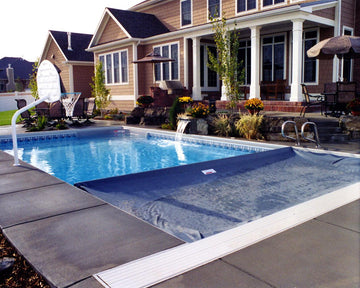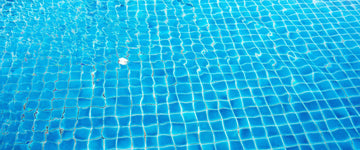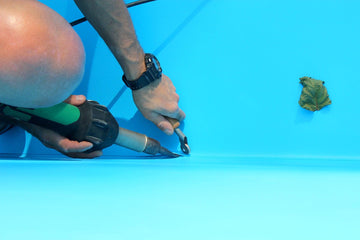Why Pool Resurfacing Can Save Your Aging Pool
Over time, you may find that cracks, chipping, and other marks appear on your pool’s surface. No matter how well you take care of your pool, these signs of aging are bound to appear naturally. That’s why pool resurfacing is an important process that every pool owner should consider once in a while. This process will transform your chipped, old-looking pool into a sparkling centrepiece in your backyard.
What is Pool Resurfacing?
Pool resurfacing is a type of repair performed on pools with visible wear on their surfaces. It is extremely important to complete this process in order to maintain the health of your pool’s surface and overall aesthetics.
First, the pool is drained, and its plaster or sealing is removed. The following steps will vary based on the state of the pool or the material of its surface. It may need to be blasted with water or sand, or given a special coating before a new surface layer is ultimately placed over it. Certain repairs may also need to be completed, such as filling in cracks. Once repairs are done, the pool is primed and given a new surface. It usually takes a week for the pool to dry before the pool can be refilled.
We recommend seeking out a pool care professional to perform the resurfacing. At the end of this process, your pool’s surface will look sparkling and brand new.
READ MORE: RENOVATION IDEAS TO MODERNIZE YOUR INGROUND POOL
Why Your Pool Needs To Be Resurfaced
Extends The Life of Your Pool
You want your pool to be healthy and usable for as long as possible. A good resurfacing job can preserve the life of a pool for a long time. Plus, ignoring your pool’s overall upkeep could end up leading to expensive and lengthy repairs.
Improves The Look and Feel of Your Pool
When you resurface your pool, you will replace the cracked, dirty surface with a fresh, spotless one. This will make the surface of your pool more visually appealing, and that will make the water look better as well. Resurfacing will also ensure that the bottom of your pool is smooth, which will feel better on swimmers’ feet. In some cases, a chipped surface can leave debris floating in water, plus, some stains could indicate bacteria or fungus buildup. By resurfacing, you can remove the risks associated with these issues.
Allows For The Opportunity To Change the Look of Your Pool
Resurfacing offers an exciting opportunity to give your pool a makeover. Since the original surface is removed, you’ll be able to choose a brand new type of tile, stone or plaster for your pool.
How Frequently Should a Pool Be Resurfaced?
There is no certain amount of time that you should wait before resurfacing a pool. Among other factors, this will ultimately depend on what material the surface is made from. Pools that are made from pebbles, cement, or plaster should be resurfaced every 3-7 years. Ultimately, you should look into resurfacing your pool once you start to notice warning signs, which are listed below.
Stains
Pools can become stained for plenty of reasons. Sometimes, stains are a result of the pool’s chemicals reacting, or from metals that entered the pool from an old heater. Debris and algae are also common findings in pools that create stains. Proper cleaning should get rid of most stains, but you’ll quickly find that some are nearly impossible to remove without resurfacing.
Leaks
You may notice cracks on or around your pool. These cracks can quickly turn into leaks, and leaks are dangerous if untreated. Wet spots of grass near the pool, loose tiles, and unbalanced pH levels are also signs of leaks.
READ MORE: THE ONLY POOL RENOVATIONS GUIDE YOU’LL EVER NEED
Rough Texture
A swimmer should be able to plant their feet firmly on the pool’s surface, and feel that it is smooth. Over time, however, a pool’s surface can become rigid naturally. This can be uncomfortable, and even dangerous, as it can cut the swimmer’s feet.
That rigid feeling naturally occurs. When too much water flows over a surface for a long period of time, it creates erosion marks. That’s how many bodies of water in nature are formed – think of rivers and lakes with interesting geographical features.
Since your pool is not a river or a lake, you shouldn’t have to swim over a bumpy surface. Resurfacing can fix this problem.
After resurfacing your pool, you’ll feel great swimming in a pool that’s safer, more comfortable, and sparkling with beauty. After the resurfacing process is complete, continuously clean your pool and monitor the balance of chemicals in the water. This will limit the damage that will lead to the need for another resurfacing job.




